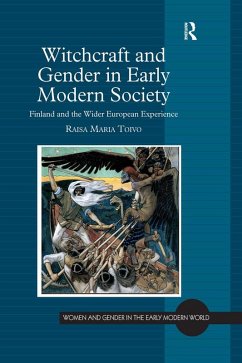With a sharp eye for detail, Raisa Maria Toivo explores the gender implications of the complex system of household management and public representation in which seventeenth-century Finnish women and men negotiated their positions. From specific case studies of Finnish peasant women, Toivo broadens her narrative to include historiographical discussion on the history of witchcraft, on women's and gender history and on early modern social history, shedding new light on each theme.
Dieser Download kann aus rechtlichen Gründen nur mit Rechnungsadresse in A, B, BG, CY, CZ, D, DK, EW, E, FIN, F, GR, HR, H, IRL, I, LT, L, LR, M, NL, PL, P, R, S, SLO, SK ausgeliefert werden.
'In this unusual study, Raisa Toivo takes us into the little-known world of Finnish peasant farmers in the seventeenth century. With a sharp eye for detail and a broad sense of the major currents in the literature on women and gender in early modern Europe, Toivo explores the gender implications of the complex system of household management and public representation in which Finnish women and men negotiated their positions. Pushing against standard assumptions about women and witchcraft, Toivo unsettles the idea that witchcraft accusations were necessarily catastrophic turning points in women's lives. On the basis of an extraordinary trove of sources documenting the life of a single substantial peasant woman, Toivo suggests that witchcraft and magic could form just one thread of a complex tapestry of life and survival, and that our picture of women's roles, lives, and risks has been distorted by a fascination with the rare, sensational moments documented in trials of witches.' Valerie Kivelson, University of Michigan, USA

